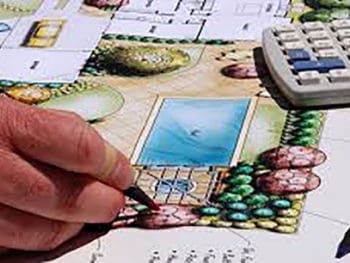16 Amazing Careers Opportunities in the Architecture Field
Getting an architecture degree involves learning a lot about design, structure, and construction. However, architecture is much more than buildings. It includes a range of practical and skills, which you can utilize in many careers in architecture.
First of all, let’s talk about a wide range of skills in architecture.
Architecture Careers – Skills Range

The list of skills you get when after you pursue the architecture is wide and includes artistic, practical and engineering skills. The first set of skills is design-based. The talent and visual mind aren’t enough, you will have practical, but also theoretical knowledge and use of specialized software is a must.
Hand sketches and 3D models are essential.
Engineering skills correlate with building and construction. In this area, you should know more about laws, safety regulations, and costs.
Paying attention to details is very relevant, and architects study more about customer service skills, to be successful in working with clients.
If you are analytical, intuitive and thorough, it is always an added plus.
You can always expand the list of skills to include communication skills, specific design professions, software, budget-handling and material, and project management skills.
Which Field Is Best For Architecture?
The architecture includes both urban objects and working in nature.
There would always be a need for functional objects such as public buildings, corporative centers, and hospitals.
However, there are more and more areas in nature that require architecture work.
Therefore, building architects, urban planners and landscape architects are among the most adaptable field in architecture.
However, with technology evolving, professions related to the digital world are slowly taking primacy.
Let now talk about possible architecture careers.
Architecture Careers
Most people understand architecture as an art, or science of constructing physical objects. However, the list of careers goes beyond it.
Different Types of Architects
The obvious choice after finishing your architecture studies is to become an architect. But, what kind of an architect? There are several types of architects, based on their primary tasks. While some of them plan and construct buildings, other work to create public green areas, to help restore historical buildings or work on lighting systems indoor and outdoor, etc.
Here is a list of different types of architects.
- Building Architect
The architect’s career is the most logical choice. An architect work is creative and highly important to an endless number of people. Architect designs and makes houses, public objects such as hospitals and museums, sacral building and many more.
In general, there are three ways in which you can develop as an architect – building architecture, landscape, and naval architecture.
Building architecture includes not only working on new buildings and houses but also adapting and reconstructing old ones.
Being an architect includes lots of inspiration and lots of work as well. Making or adapting and lots of old buildings, while keeping the look or making it modern starts with detailed planning. Other steps are budget projecting, resolving environmental impacts and cooperation with so many other professionals.
- Landscape Architect

Landscape architecture is as the name indicates, connected with open space. Landscape architects work with natural and urban areas and their work affects the lives of so many people.
To become a landscape architect as well as a standard architect requires getting a university degree. However, to become more attractive to potential employees, you should work on your inspiration, keep track of trends and latest technology improvements.
Other than formal literature, you can benefit from reading lots of informal discussion essays and get inspired in the work of like-minded people from all over the world.
Landscape architecture is all around us. The best examples which can inspire and motivate you are The garden of Louis XIV in Versailles in France and Columbus Circle in New York.
However, some people mix landscape designers and landscape architects. While landscape designer works with smaller areas for personal use, a landscape architect works with a large, public field, intended for use by many people. The results of their work improve our life and environment.
Sometimes you can enjoy the aesthetic of the landscape architecture, and sometimes you will be pleased with improved functionality.
- Urban Planner
A similar profession to landscape architecture, but focused on city areas is an urban planner. An urban planner is in charge of projecting the look of larger, urban areas. This person keeps track of the look of the area, by monitoring the building of new objects. Urban planners work closely with other professionals, and plan, monitor and execute the restoration process of historic city parts.
In general, an urban planner works to ensure the best possible use of land. Because more and more people are moving to cities and the development is rapidly growing, urban planners get more responsibility in terms of effective, coherent and practical use of land.
- Restoration Architect
The historical objects are of great value for every country. These objects tell stories about the past and teach us more about the future. However, nothing lasts forever and the historical objects need special care and restoration.
Very often, a restoration architect work to preserve the original look with modern building techniques. Usually, it includes knowledge of past constructing methods to preserve the initial appearance. Restoration and conservation is a challenging job, but also dynamic and creative.
- Extreme Architect
Because of the climate changes and negative impact on the environment, there is a need for a different kind of architecture work. An extreme architect develops and constructs buildings and other public and private objects to withstand extreme weather conditions, such as natural disasters or Arctic winters.
The work of extreme architect exceeds the weather conditions and building process. It includes thinking about material, structure, but also material transport, energy supply, waste disposal in such areas and environmental impact.
Therefore, if extreme architecture is something you are interested in, you should learn more about the environment, the predictions, wear and tear of the materials and overcoming the fundamental challenges in the building process.
An extreme architect works with other experts in climate, soil, and engineering. For example, due to overgrazing, more and more land is turning into desert. Desertification is a growing issue, especially in Africa where many architectures and biotechnology projects focus on fighting it.
- Lighting Architect
Light is an essential factor in many working fields, including architecture. Light, both natural and artificial, can change the environment and user experience.
Therefore, a lighting architect designs lighting systems to complement the overall design of an object and fulfill user needs.
The lighting design architecture is a specialized field in architecture and has a significant impact on human lives.
It is a practical, design-related discipline, which is also useful in the entertaining industry. Very often, you can find specialized masters programs within universities to upgrade your knowledge about architectural lighting.
Designers and Other Design-Related Careers Within Architecture
If creativity is your strength, you can pursue some of the careers in the design field. The deep understanding of space and physical objects can provide you excellent leverage and ground for a career in mass-production or digital world.
- Production Designer
If you wonder how you can utilize your skills in the entertaining industry, the answer is a production designer. A production designer works on a movie, TV show or theater set to create a visual look, an outline for the story.
Your work as a production designer will work with the director and producer to complete the work of the entire team. The production designer job is very dynamic and sometimes overlaps with other professions such as a stage designer.
Advanced understanding of media forms is useful and allows you to have a multidisciplinary, comprehensive approach to the work.
- Industrial Designer

While the architect focuses on one single object for use by many people, an industrial designer does the opposite. An industrial designer works to create a better user experience in a variety of areas such as furniture, cars, toys, and everything related to mass production.
Sometimes, people specialize specifically for furniture design. The work involves sketching, modeling, working in CADD software and other techniques that you learn on architecture.
- Video Game Designer
Architecture doesn’t concern only the real world. The digital world is expanding, as are the needs for a realistic scene. The job of a video game designer is creative and fun because there are almost no boundaries in what you can accomplish.
On the other hand, when working as a video game designer you have to consider the gameplay, the goals and the scenario to match the digital environment properly.
- Virtual Reality (VR) Designer
While we are talking about digital architecture, a new career that is emerging from the technology progress is VR designer. Virtual reality is the future and there are no physical limits in what you can create. VR is massively used in video games, but also for different simulations and training programs.
On the other hand, succeeding in VR allow you to create a presentation of your real projects for clients. Having a VR presentation also makes it easier to notice possible changes and the building as if it was finished.
The virtual reality world opens many possibilities for people of all professions, and the architects are no different.
Software for virtual presentation of the architecture projects was a thing, even before VR reality got popular. The reason behind it is simple.
The sketches and blueprints cannot create the immersive feeling as the VR headset can. Therefore, it is worth investing in your education to learn more about VR software and the use of VR in architecture. Learning more about it will expand your field of work to entertaining programs as well.
Artistic, Engineering, “Green” and Other Alternative Career Choices in Architecture
Because architecture is both art and science, you can pick the field in which you can grow your skills. Within other alternative choices in architecture, there are professions in education, artistic aspirations, but you can also pursue a career in the engineering field.
Architecture is taking more charge in environmental issues, so there is rasing demand for green professions in this area as well.
- Architecture Photographer
Architecture photography is an art of taking photographs from buildings and other objects. It is a profession that requires architecture knowledge and photography art.
Architecture photography includes photos of bridges and cityscapes, to get the beautiful art of architecture.
However, to become an architecture photographer, you would have to know about lighting, angles, posture, etc. Also, learning more about the camera and different tools is a must. On the other hand, you would have to focus on capturing not only the building itself, but the environment and atmosphere to mimic the real experience.
- Structural Engineer
Structural engineers work closely with architects to create the skeleton of any object, such as tunnels, bridges, and buildings. If you have a degree in architecture, you can work as a structural engineer, but you will have to know everything about materials and their use. That includes density, hardness, strengths, bending strength and many other material characteristics.
Also, exceptional skills in physics and mathematics are important.
You can focus on structural engineering if you prefer construction over design.
- Environmental Conservationist
The work of conservationists is similar to the work of landscape architects. However, the conservationists focus on maintaining and preserving the natural and endangered ecosystems.
The current focus of the conservation branch is the future ecological landscapes. Think about it as creating new nature, able to withstand natural, but also human-caused challenges.
A work of a conservationist is highly important and will get more exposure and responsibility in the future.
To become an environmental conservationist, you will have to take ecology courses and learn more about nature.
A green architecture, which includes the use of sustainable materials and building process with the lowest environmental impact, is the part of conservationist work.
- Teacher
If you have an architecture degree, you can start sharing your knowledge and passion for architecture with likeminded students.
For architects with no are not sure which architecture path to take, working as a professor for a couple of years can be an excellent way to clear the mind and figure out which skills you want to pursue.
On the other hand, there is an architect that finds inspiration and motivation in sharing perspectives and teaching students.
Teachers work in an architecture school has many perks. Rising a new generation of future architects is just one of them.
- Architecture Researcher
Digital technologies are changing the world we knew, and have a large impact on architecture as well. Architects that focus on the new tools and their positive impact on the planning, designing, and building objects optimize current methods for better results.
If the development and architecture progress, in general, are your field of interest, start with researching field.
- Artist
If you are creative, but the need for functionality limits your creativity, you can pursue a career in art. Getting an architecture degree will provide you with a deep understanding of space.
It is essential in installation art, sculpture and other art forms.
Is Architect A Good Career?

You might wonder why to pick architecture in the first place. Architecture is a versatile and very progressive field. In some ways, architecture is a multi-disciplinary field and has connections to many other fields of human activity. Those include existential needs, entertainment, development.
Any profession in architecture is suitable for creative minds and those with excellent problem-solving skills. Whether you enjoy making real structures or working in digital terms, architecture is a prospective path.
Bottom Line
Architecture is a versatile, multi-functional and highly important profession. Architects design our environment in terms of functional buildings, landscape, they maintain historical objects and work towards creating a better life for humankind.
The list of careers in architecture includes professions that focus on building objects and maintain them, taking care of nature, work for extreme climate and develop new, digital experiences.
To pursue your passion in any architecture field, sometimes you will have to take additional courses to learn more about compatible sciences.
Design is an essential field of architecture, but so are the economy, structural engineering, ecology, and digital science.

